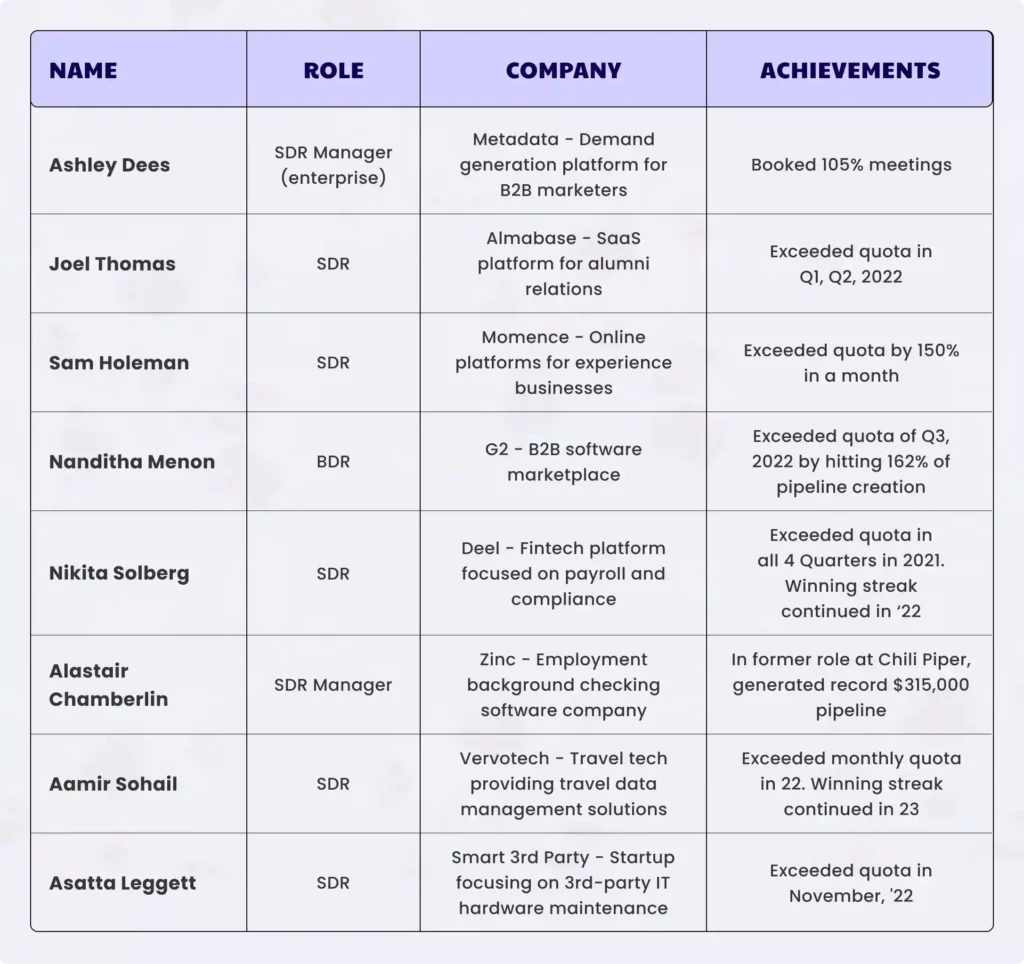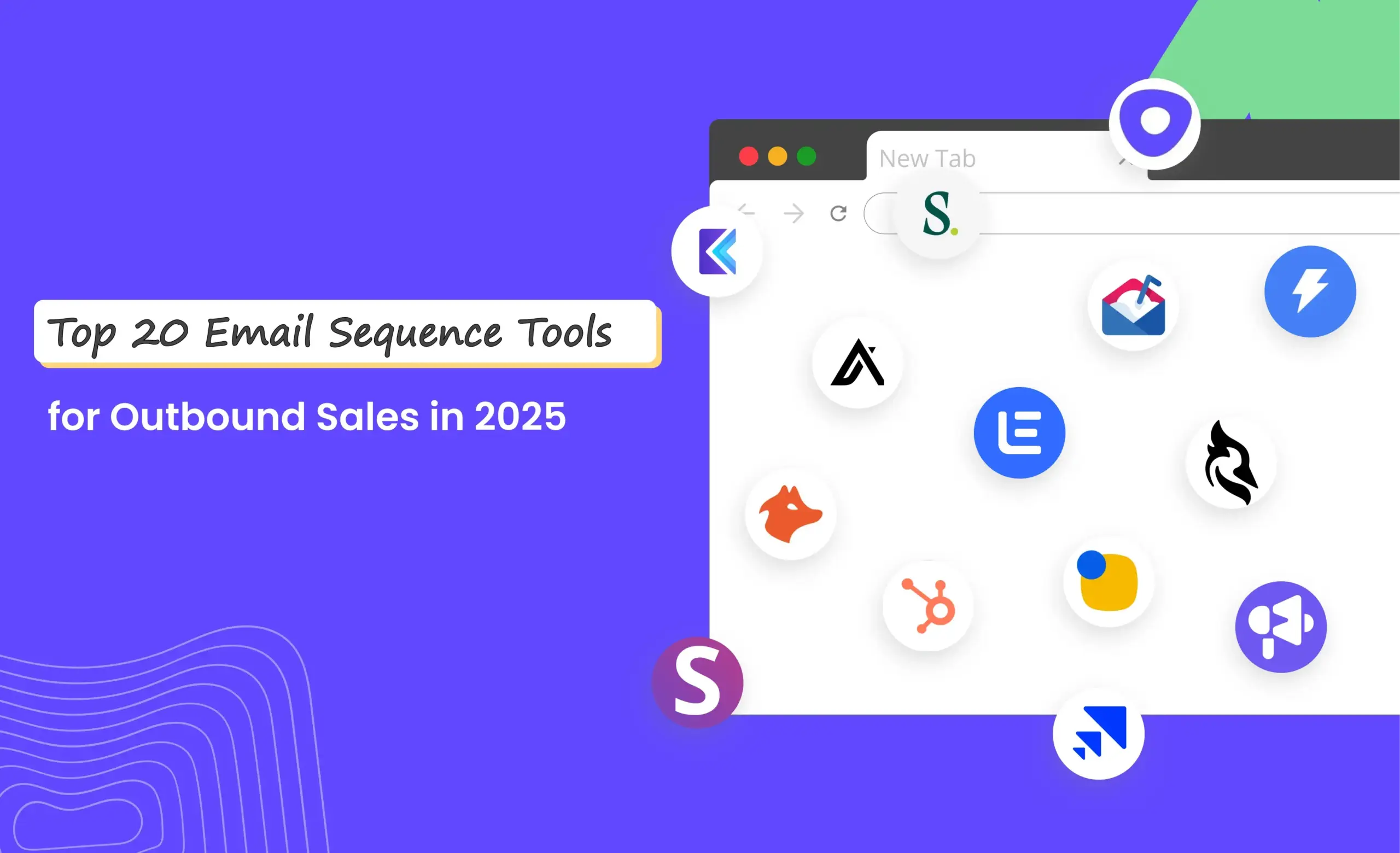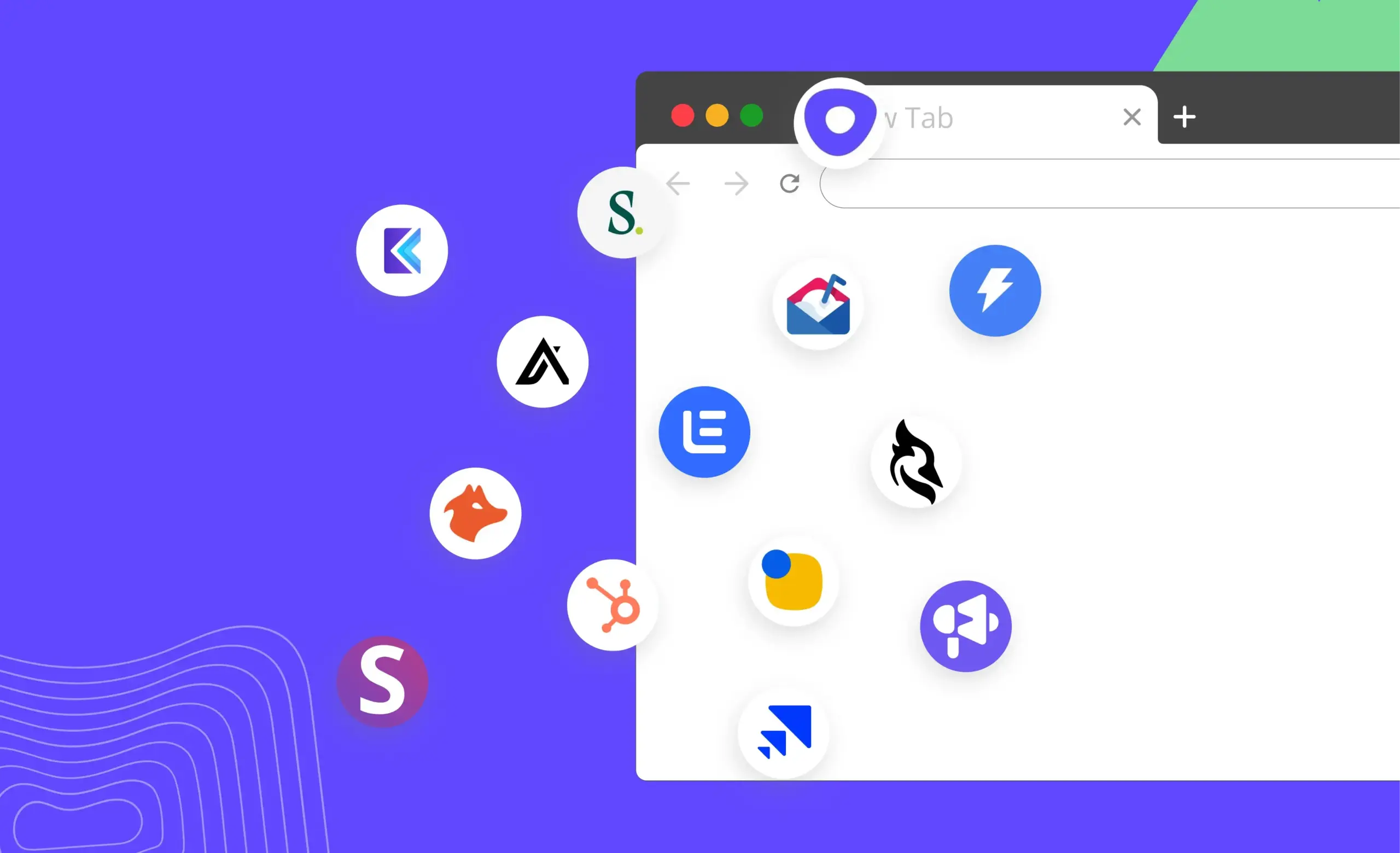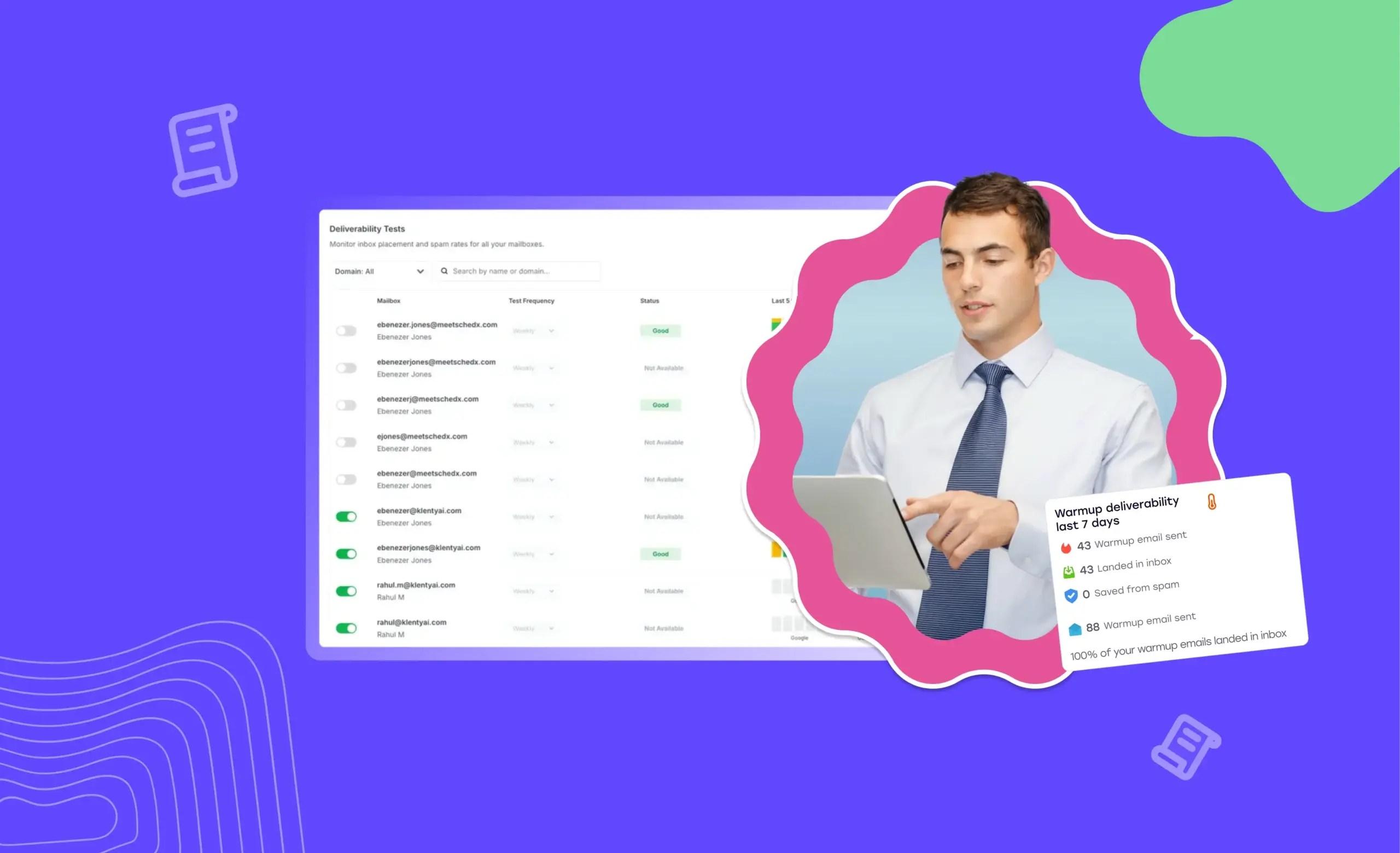We spoke to the best-performing SDRs in SaaS companies from different industries selling to different audiences to get insight into how they sell in, Klenty’s SDR X Factor series.
What we discovered was a treasure trove of best practices of quota-exceeding sales reps on how they did their cold email outreach.
All of these cold email strategies put together helped them crush their quotas of meetings booked or pipeline generated, month after month, quarter after quarter.
We handpicked the top most useful cold emailing tips that 8 salespeople shared from their successful cold email campaigns and shared them below.
A Pro Guide on How To Write a Cold Email in 2024
Tip #1) Personalize Only the First Email in the Sequence
Most of the sales professionals we interviewed agreed on having minimally personalized cold emails, and to have it only for the first email in the sequence since that’s what could grab the most eyeballs. The highest open rates are for their first emails, so they personalized them to leave a lasting impression on prospects.
And most, if not all, of them, would try to tie in the personalization—whether that’s using an image, LinkedIn info, a value proposition, social proof, or a role-specific pain point—to the product/service itself so the personalization is relevant. Even if they're using cold email templates, the first, at least, would be personalized.
Even when he comes across an interesting detail of a prospect, such as their favorite sport, he’d tie it to the product to keep it relevant. An example he gives is how he personalized an email to a C-suite executive, who was into rugby as evident from his LinkedIn posts. “I wrote an analogy about how converting a trial and a game of rugby is like the difference between winning or losing, and the same applies to their inbound leads,” he recalls. Minutes after he sent this email, the executive replied, and he managed to book the meeting.
- Alastair Chamberlin, SDR Manager, Zinc
Tip #2) Personalize the Cold Email for the Role You’re Reaching Out To
This is essential if your email outreach strategy includes multithreading. Multithreading, aka account-based selling, is creating an email list of people from the same business account and reaching out to all of them with personalized messaging. Nanditha from G2 suggest
If I'm reaching out to a marketing person, I should be solving a marketing problem. If I'm reaching out to a CEO, I should be solving a larger problem, like about brand visibility.
- Nanditha Menon, BDR, G2
Tip #3) 4-8 Emails Optimal in an Email Sequence
Most SDRs who focus on email as their primary outreach channel send between 4 and 8 sales emails. The sales sequence would include a combination of personalized cold emails and follow-up emails spanning 2-3 weeks or a month.
Alternatively you can use sales automation to add multiple outreach channels to your sales sequence, like phone calls, LinkedIn messages, SMS to optimize your cold outreach strategy and boost your reply rates. But choosing the outreach channel largely depends on your target audience, the industry they’re in. For example, if you’re targeting salon owners, your approach to outbound may be focused on cold calling rather than cold emailing.
I use a 5-email sequence for a prospect. The first email will be highly personalized, the second one will have a value proposition and say why our product is relevant to the prospect. The remaining emails will contain information that's industry-relevant, but not product-related.
- Joel Thomas, SDR, Almabase
Usually, the first emails get the most number of responses. But I’ve also found that the third and fourth emails with industry-related information also get replies sometimes, as these are generally seen as nurture content.
Tip #4) Send Breakup Emails That Are Not Passive-Aggressive
2 out of the 8 prospects preferred to send the 1-2-3 breakup email where, in a bid to understand the prospect’s intent, SDRs would give their prospects three options to choose from.
While sending breakup emails is an effective cold email strategy, it has a bad rep for guilt-tripping prospects and for being passive-aggressive. That strategy might have worked in the past, but today, SDRs prefer to send nurturing content to minimize the emotional quotient in a breakup email, and or be absolutely direct with the prospect about letting them go. This works in not damaging the relationship with the prospect leaving the door open for future collaboration. Below is a template one SDR shared that boosts response rates.
Maybe I missed my mark. Do you mind letting me know why?
- We already have a solution in place.
- We don't have the budget for it.
- Not interested.
Among these, the breakup email asks prospects to just reply with a number — 1, 2 or 3.
People are busy, they don't want to spend time typing out. They just want something easy.
- Nikita Solberg, SDR, Deel
Tip #5) Nurture Prospects Who Haven’t Replied Instead of Breaking up With Them
Contrary to the popular breakup strategy, Metadata’s top-performing SDR, Ashley Dees adds prospects to a nurture sequence instead of breaking up with them. This way, she is able to free two birds with one key–she’s removing prospects from her list, and improving the odds of converting the cold prospects.
They would receive 5 to 6 emails with content that’s not directly linked to their company or product. I put myself in their shoes. Forget that I work for Metadata for a minute. What would they find useful? And that's what I do most of my emails.
The content? It could range from articles to LinkedIn posts to guides that are relevant to the prospect and their role.
This way, the prospect might engage with the content and might even reconnect with her in the future.
I want my prospects to see these emails and think: ‘Oh, that's Ashley, she sends me really cool stuff. She has never really bugged me about taking a demo. She sends me all these useful tips.
- Ashley Dees, SDR Manager, Metadata
Tip #6) Good Cold Emails Are Less Text-heavy & More Visually Appealing
All the SDRs unanimously agree that cold emails and follow-ups should be less reliant on text. From their experience, they know that nobody reads long and winding emails. Most of them prefer to break up the text with images, product screenshots or emojis.
I attach screenshots of dashboards comparing the G2 profiles of the prospect and their competitor. This would help present the statistics in a better manner and also enables prospects to look from a buyer’s perspective.
- Nanditha Menon, SDR, G2
Also, being a dog person, I occasionally add cute memes of dogs if I find out during research that the PoC, too, is fond of dogs. This has occasionally got me responses that eventually led to booking meetings.
Tip #7) Write Subject Lines That Highlight the Prospect Not You
When you’re reaching out to prospects, many would opt to write your company name and their company name in the subject line. But the SDRs we spoke to, at least those who have the time to personalize, tell us that the best way to personalize subject lines is by adding a few of their interests or past experiences or even about their role’s pain points specifically. Something about them in specific, and that is potent in capturing their attention.
Note: For most of these salespeople, personalization is an important part of their sales process, so all of them had set aside between 5 and 10 minutes for researching each prospect. When doing outreach at scale, they'd spend lesser time on personalization.
Who wants to look at more stuff about work? No offense to our companies. We all love our companies and the work that we do, but make it fun. People like to have fun, make it about them,” she says.
An example she gives is how she found while researching one of her prospects that they wrote a short book. “So I made my subject line, “metadata demo + {her name} // {name of her book}” with 3 emojis that semi-relate to the content,” she adds.
- Ashley Dees, SDR Manager, Metadata
Tip #8) Keep Subject Lines to 4 Words
7 out of 8 SDRs send subject lines that are 3-6 words, while 6 out 8 SDRs prefer to keep their subject lines under 4 words. Almost everyone also personalizes their subject lines to include emojis, the prospect’s company name or their professional or personal interests–in a bid to get their attention in a crowded inbox.
For first name personalization, he uses a format like (“{first name}, your thoughts on [topic]?”) and for company name personalization, he goes with the “plus format” (“Vervotech + {company name}: Hotel Mapping”).
- Aamir Sohail, SDR, Vervotech
Aamir ensures that his subject lines do not exceed 6 words to make it mobile-friendly and carries out A/B testing using the sales engagement platform, Klenty. He does not use emojis in his subject lines as he considers them unprofessional. “No one is expecting an emoji on their business emails. It is more of a personal mailbox thing,” he opines.
Tip #9) Using Prospect FOMO in Email Copy
G2’s Nanditha Menon leverages people’s FOMO (Fear Of Missing Out) to hook prospects. FOMO, according to the National Center for Biotechnology Information, is a phenomenon that was noticed among social media users.
Experimental psychologist Andrew K. Przybylski with other psychologists, defines FOMO as a “pervasive apprehension that others might be having rewarding experiences from which one is absent.” Nanditha banks on exactly this sentiment to take effect when she adds FOMO to her email copy. How does she trigger it exactly? Here it is.
I’d write the email on the lines of, ‘Hey, this is what your competitor is doing. This is something you're way behind in the game, and there's something you're missing out on.’ I’d also attach statistics to support her claim to convince the prospect that they’re indeed lagging behind their competitors.
- Nanditha Menon, SDR, G2
Tip #10) Use Emojis To Add Humanize Your Subject Lines
Half of all the SDRs say that they add emojis to jazz up their subject lines. But also offer a word of caution. Use it appropriately, as in knowing who you’re reaching out to, whether they are a boomer or a millennial, or a genZ prospect. If it’s a professional email, don’t use it. From using it within emails or in subject lines, there are a lot of fun ways to add it to your cold email strategy. But here’s one way to use it creatively.
I use emojis to draw connections between the company's marketing initiative and my outreach. So if the marketing department has mailed a bottle of wine and a pineapple to each prospect as part of a physical warming up campaign, I’ll add a couple of wine and fruit emojis in my cold email to those prospects to give them instant recall.
It's a tee up for the salesman, and it works great. Actually, people really appreciate it.
- Sam Holeman, SDR, Momence
Tip #11) What Should Your Ask Be in a Cold Email?
For years SDRs have been trying to drive Call to Actions that ask for meetings directly. But how effective is it today? Are people willing to give up 20 minutes of their days so easily nowadays? Nope, they aren’t. Permission-based and soft CTAs are all the rave now.
2 quota-exceeding SDRs we spoke to don’t ask for meetings in their email sequences as they believe it could annoy the prospects.
I avoid directly asking for a meeting in any of my emails. While the email signature has a Calendly link, I include a Calendly link in the email body from the third email (of the sequence) to allow the prospects to schedule a meeting based on their convenience. Asking a question on every email is not beneficial for me. Instead, I give them the choice.
- Aamir Sohail, SDR, Vervotech
Tip #12) Multithread Accounts To Improve Your Chances of Getting Noticed
Today’s software buying decisions involve a string of stakeholders–from end-users to mid-level managers to decision makers to legal to big buying departments (in enterprise-level companies). So, to get the attention of your prospect, you could map out different stakeholders or Points of Contacts (PoCs) in the organization and reach out to all of them with messaging that’s personalized to each of their roles.
In a day, I reach out to 5 accounts, in which I email 2 PoCs in the same account. This way, chances are that the 2 different PoCs, who are working in the same company, would know that I’m reaching out.
Make that conversation happen (within the prospect’s company). They should talk about your solution. Create that buzz within the organization. So, the chances of booking a meeting would increase significantly.
- Nanditha Menon, SDR, G2
Tip #13) Use Product Screenshots, Infographics To Improve Your Email’s Scannability
6 out of 8 prospects use images, product screenshots, infographics, and video embeds to make their cold emails engaging and break the monotony of the text.
From adding product dashboard screenshots to How-to gifs related to product usage to case studies to important infographics from the brand, these SDRs believe that image personalization is effective in getting replies as it is simple and takes less time to create for each prospect. Create how-to gifs, and screenshots relevant to 2-3 types of personas you do business with and store it in an easily accessible place, so you can add them to your emails in a jiffy.
I’d create a GIF of how his tool works and attach it with the email. He’s also experimented with image personalization by attaching funny memes towards the end of the cadence, when the prospect hasn’t replied to the previous mails.
- Alastair Chamberlain, SDR Manager, Zinc
Hot Takes
- Sam Holeman of Momence prefers to send, contrary to popular belief, long, contextual subject lines like these - “What is Momence? Here's some basic information for {first name}.”
- Adding the prospect’s name in a bid to personalize her cold email subject lines, didn’t yield any changes to her reply rates - Asatta Leggett, Smart 3rd party.
- Joel Thomas, SDR at Almabase, doesn’t use a breakup email in his sequence because he finds them too passive-aggressive.
- G2’s Nanditha Menon actively posts on LinkedIn to book more meetings. She says that her activity on LI reminds prospects to reply to her emails or LinkedIn messages. “I had a prospect who saw a LinkedIn post of mine, emailed me, and then we got a meeting,” she recalls.
P.S.: Here’s a little info on the SDRs we featured:






